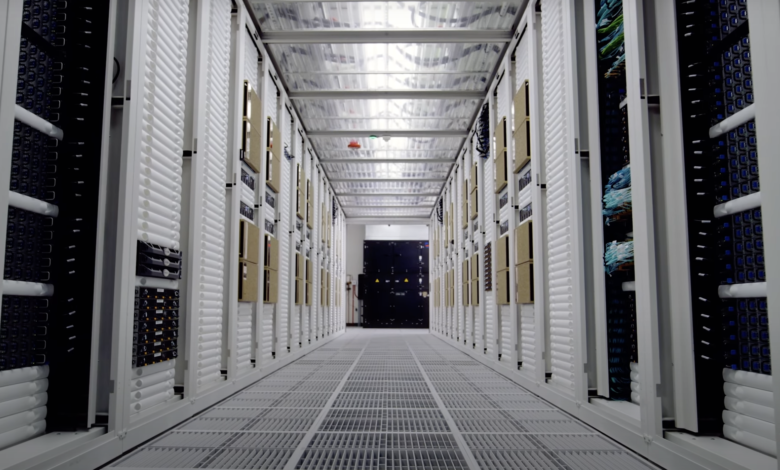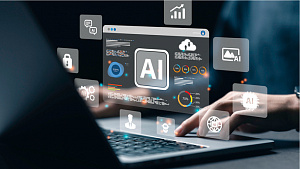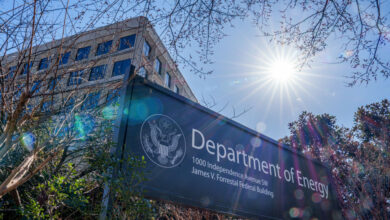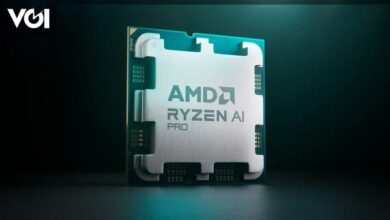Georgia Tech embraces artificial intelligence with new “digital sandbox” that will equip students with resources in the age of AI

The Georgia Institute of Technology is embracing the age of artificial intelligence.
Earlier this month, Georgia Tech unveiled its new AI Makerspace on campus, described as a “digital sandbox”, that aims to facilitate access to resources for students to become proficient in emerging tools and advance AI.
The makerspace is a project launched in conjunction with NVIDIA, a leader in the AI space today. Georgia Tech makerspaces are largely student-led workspaces where students’ creativity and innovation are allowed to run free. The university had five makerspaces listed on their website before the introduction of the AI Makerspace, with focuses ranging across multiple like electrical, mechanical, aerospace.
The AI Makerspace was described as a “dedicated computing cluster paired with NVIDIA AI Enterprise software” in a blog post from Georgia Tech, which also described the power of the new graphic processing units (GPUs): “To put this computational power into perspective, it would take a single NVIDIA H100 GPU one second to come up with a multiplication operation that would take Georgia Tech’s 50,000 students 22 years to achieve.”
In short, the makerspace is going to have some serious computing power and strengthen the school as a tech hub of the country.
Atlanta Mayor Andre Dickens commented on the space after the announcement, commending Georgia Tech on their efforts.
“Partnerships with industry leaders such as NVIDIA propel our students and workforce toward tomorrow, further enhancing Atlanta’s status as an innovation hub,” Dickens said.
Matthieu Bloch, a professor in the School of Electrical and Computer Engineering (ECE) and Associate Dean for Academic Affairs of Georgia Tech’s College of Engineering, said he is thrilled for the students to have access to this technology.
“I’m jealous, actually, because I wish I could be in their shoes,” Bloch said. “This kind of computing power is not something I could have dreamt of,” he added, referencing when he was a graduate student at Georgia Tech in the early 2000s.
He added that laptops were just becoming widely used and available around that time, but that nowadays the computing power needed to make strides in the AI space is not found in standard computers.
“If you want to do something that is meaningful for industry, and work on real world problems, you need the sort of computing power that goes way beyond your laptop,” Bloch said. “I think it’s awesome that Georgia Tech is offering this to the students now so that they can be trained on things that are connected to real world problems.”
Bloch said that average students had access to about 8 teraflops — a measure of computing performance — but the AI Makerspace will allow around 67 teraflops. Additionally, memory is expanded from about 12 gigabytes to 80 gigabytes due to the hardware and software upgrades.
One of the focuses on this space has been its role in “democratizing AI” — increasing access to these technologies — according to the school. What this exactly looks like, however, is still being refined. Phase one of the space was building the initial infrastructure and opening the space to classroom instruction for a pilot class around the fundamentals of machine learning.
Moving forward, the university plans to embed AI — and the AI Makerspace resource — into more curriculum. It recently created a novel AI minor, and has plans to integrate AI into their premier CREATE-X entrepreneurial program along with the addition of classes centered around AI. That same blog post said that in the fall semester, the AI Makerspace will be incorporated into all eight engineering disciplines. Moreover, that AI minor will be available to students in the college of engineering as well as the university’s school of liberal arts, to ensure an ethics and policy aspect to the minor.
Bloch said he has hopes that the AI Makerspace will capture the inclusive spirit of the other makerspaces, with student peer leaders who can guide other students, and students being able to come in and out in a collaborative environment and tinker as desired.
Still, with these technologies are in their infancy, it will be a process of defining what this looks like and then redefining it. Although there is a physical space that the hardware occupies, the hardware is what allows the innovation done on the software — in cyberspace, essentially — to be advanced.
“The challenge we have is making students understand that just because you can’t see it, doesn’t mean there’s not a resource behind it,” Bloch said. “You go to the [other] physical makerspace, you don’t waste 3D printing materials — you’re careful with wood and metal and try to be conservative. Because [AI] is in the cloud you don’t see it, but there is an energy cost; you’re using computing time.”
Bloch added he and other project leaders will keep this in mind and work to ensure students understand the carbon footprint of consumed energy it takes to use the resource.
Machine learning and AI, albeit in earlier forms, are not exactly new. Researchers have been advancing these tools, alongside hardware advancements for more powerful computing, for decades. Although it may seem like AI is a new concept to many of the general public, it has been a steady progress, and Bloch is excited to see how more attention and investments into AI tools will allow for further advancements.
“The big future of AI is not just generating videos or ChatGPT,” said Bloch, acknowledging those are some of the most popular components of AI today for the public. “Imagine when you take that and you start putting it in the physical world, where you’re using these sorts of interfaces to interact with robots, to interact with all sorts of systems that our students are designing.”
This is the driver for the focus on AI emerging tools, said Blanch: the recognized potential that machine learning could have to enhance the work of nearly every discipline.
“We’re really trying not to be prescriptive, but encouraging, because AI is here. It’s going to define the future, and we want all of our students to understand the tools in the context that matters,” Bloch said.
Author’s note: Mark Lannaman is a Georgia Tech alumni of three graduate programs.



